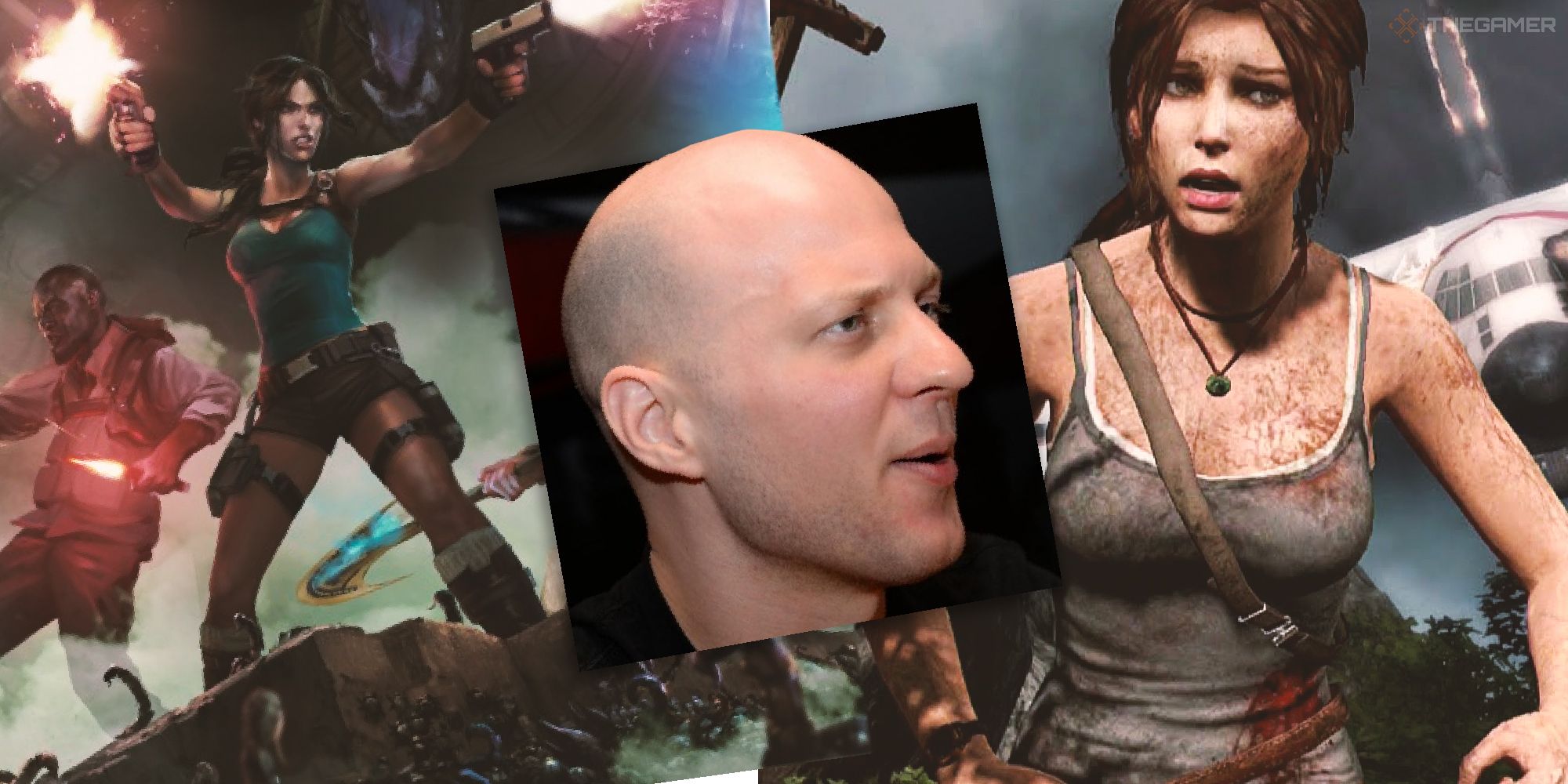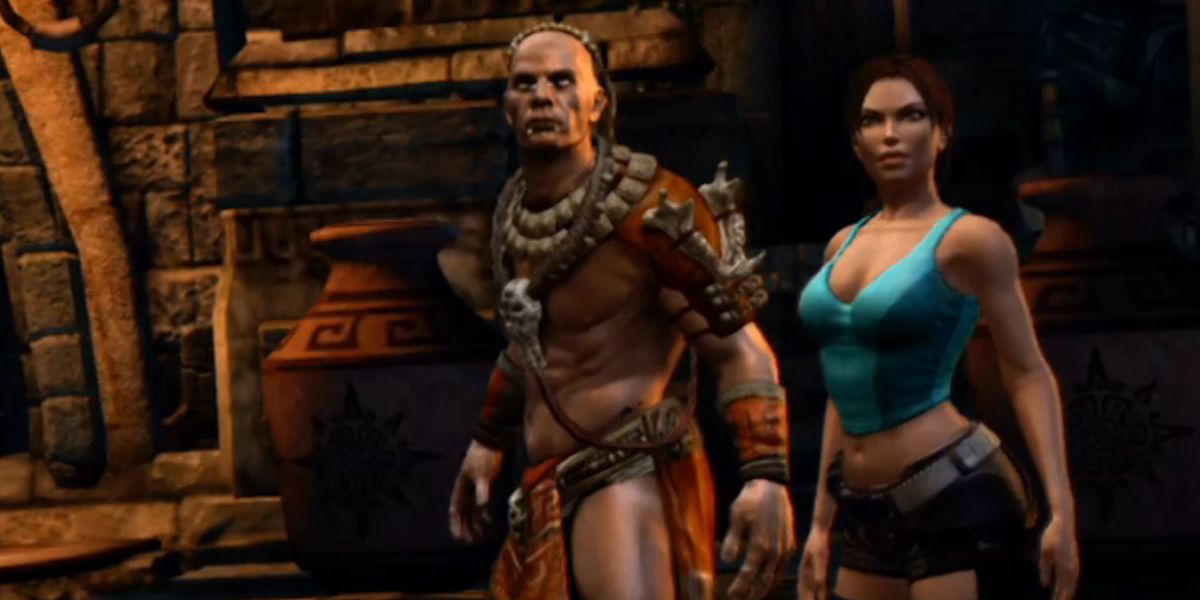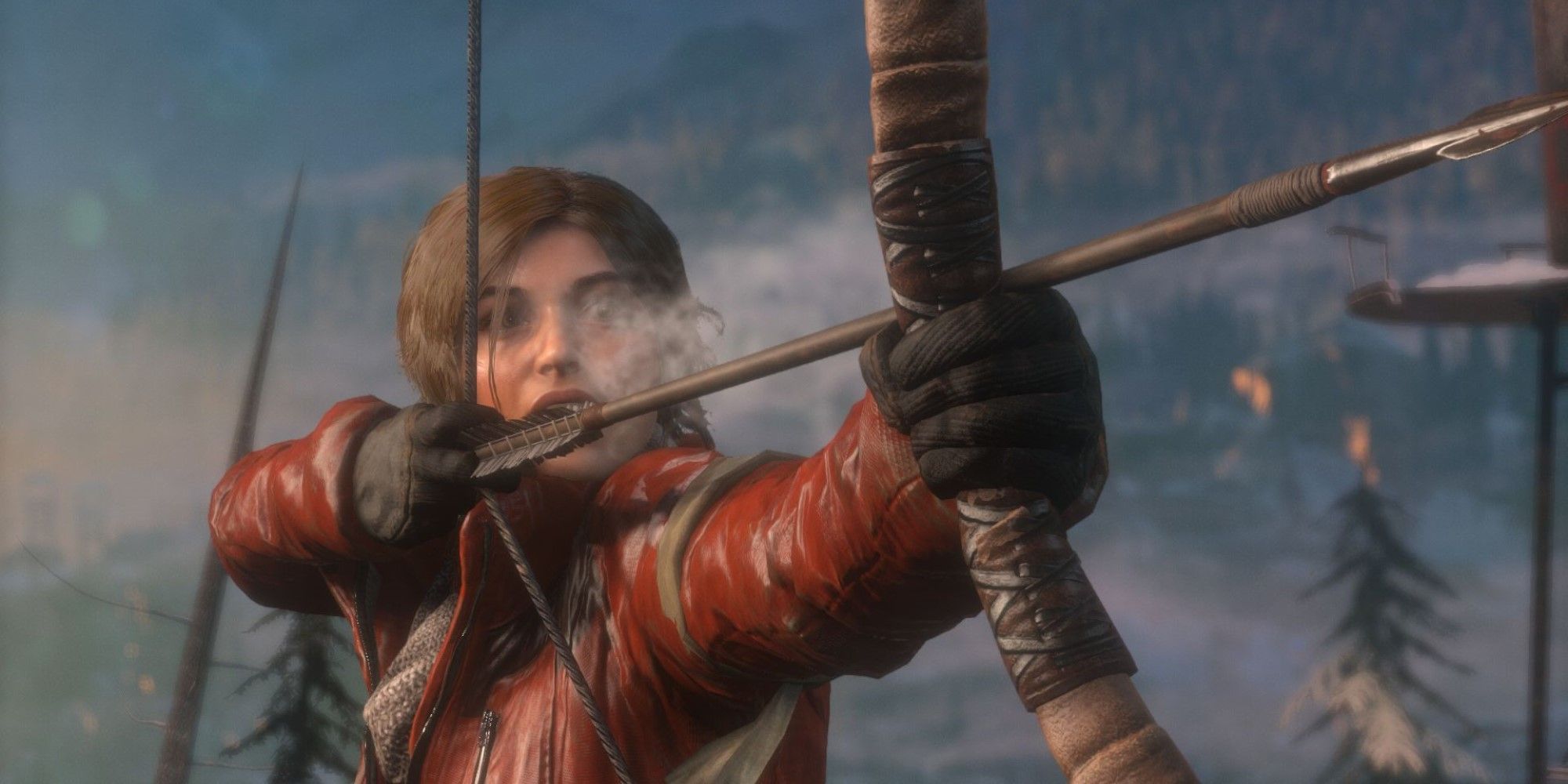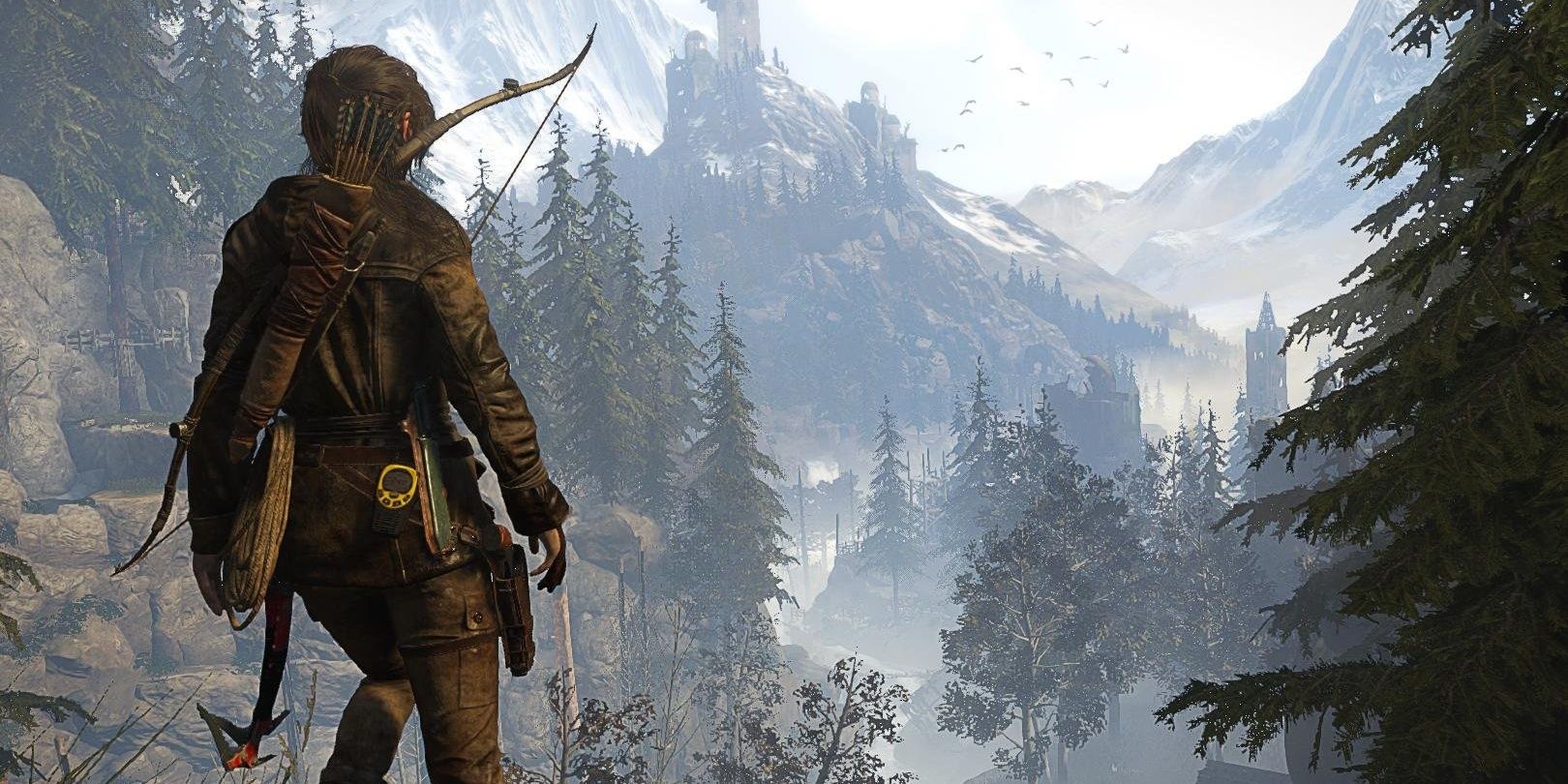Tomb Raider Interview: Jeff Wajcs On Underworld, Rise, Guardian Of Light, And How Lara Croft Almost Died
Wajcs has worked across two eras of Tomb Raider and the Lara Croft spin-off in his time with the series
You Are Reading :Tomb Raider Interview Jeff Wajcs On Underworld Rise Guardian Of Light And How Lara Croft Almost Died

“Changing something people are familiar with and love always comes with a risk,” Jeff Wajcs, a senior designer at Crystal Dynamics who worked on the 2013 Tomb Raider reboot and Guardian of Light spin-off series, tells me. “I remember when we announced Guardian of Light, there were several negative previews. But you accept that, and when you execute well, you win them over. My favourite review of Guardian of Light started with an apology for their cynical preview and went on to enthusiastically endorse our game and the choices we made. Now, the Survivor games [the collective name for the reboot trilogy] were a much bigger change, but the same philosophy carried us through. We believed in the change, we executed on it, and we won a lot of people over. So many people joined Lara on her new adventures and fell in love.”
Rebooting Lara Croft for the Survivor arc was a huge responsibility, but for Wajcs at least, that came with a lot of enjoyment too. “Getting the chance to reinvent Lara Croft was exciting,” he tells me. “Underworld and its DLC was a definitive end to one chapter in her story, so starting a new chapter felt natural, even if that new chapter turned out to be her first.”
Wajcs also worked on Underworld, and revealed that because the reboot was on the way, the team almost did the unthinkable. “The DLC for Underworld was a wild ride,” he says. “What started as a third piece of DLC evolved into a standalone chapter which – because we were rebooting the franchise with the next game – would feature the death of Lara Croft. She was to heroically sacrifice herself to save the world from some ancient threat. It never got very far, though. The project evolved into a co-op game featuring two doppelgangers like the one in Underworld, and that in turn became Guardian of Light.”

While it didn’t have to move on from the death of Lara, Tomb Raider 2013 was still a sharp change of direction for the series. It made Lara much younger and inexperienced, as well as confining her to a single setting instead of her usual globetrotting self. And, for a game named Tomb Raider, it featured a surprising lack of tombs. This wasn’t something the team consciously wanted to move away from, Wajcs says, but admits it was a difficult balancing act.
“This was something we struggled with in Tomb Raider 2013,” he tells me. “We wanted three layers of history: the ancient era, the World War II era, and the modern scavenger era. We made several ancient areas – the mountain village, the large castle, the Oni’s monastery – but because these areas focused more on action and less on puzzles, they felt less like tombs. We worked very hard on Rise to build our big ancient spaces around puzzles to make sure we nailed that tomb raiding experience.”
It’s telling that Wajcs notes Rise of the Tomb Raider learned lessons from the 2013 reboot, since Rise is typically thought of as the Survivor trilogy’s best. According to Wajcs, that might be because of how the team tried to build on Tomb Raider’s foundations. “Lara became a hardened survivor over the course of Tomb Raider 2013, so throwing her into the freezing cold was a great way for us to keep challenging her,” he says. “Mountains in general lend themselves to highly vertical layouts. They are a lot of fun for us to build and a lot of fun for Lara to climb on.
“I’m glad that Rise has been received so well. It helped that we started with such a strong foundation with Tomb Raider 2013. We were confident in our new Lara, our grounded tone, and our modernized combat mechanics.

“We did have feedback from Tomb Raider 2013, so for Rise we put a lot of emphasis on our tombs. Our puzzles got much bigger – we themed whole levels around them. Lara had to climb over ruins, dispatch groups of enemies, and solve a series of smaller puzzles as she sorted out the major obstacle in her path. It was a great new formula.
“Our hubs, too, got bigger. We gave Lara new reasons to explore and hunt and engage with other characters, so there was something magical about simply existing in this word. It helped that our setting was so striking too. You don’t see much Byzantine architecture in games, and we put ours in the icy mountains of Siberia! There’s nothing else like it.”
These foundations were almost entirely different. As recently revealed during the 25th anniversary celebrations, Tomb Raider 2013 was conceived as a survival-horror game, before the version we know today was born. “Transitioning to more of a survival-action flavour was one of the biggest changes,” Wajcs says of the game’s development. “This coincided with the biggest change we made to Lara herself, where we decided that this was an origin story. That was a bold change, but it immediately felt correct.”

Interestingly, while the Survivor series has moved away from the traditional tombs of the ‘90s, Guardian of Light – and its sequel Temple of Osiris – have doubled down on them. Despite this, the spin-offs have ditched the Tomb Raider name completely, going simply by ‘Lara Croft’. Wajcs has a simple explanation for this.
“We knew from the beginning that Guardian of Light needed to be branded very differently from the mainline games,” he says. “Guardian of Light was a fun side story, and not a new direction for the franchise, so its name needed to make that clear. When the 2013 reboot decided to keep the Tomb Raider name, those of us on Guardian of Light were very happy to use the Lara Croft branding.”
Despite the obvious differences in approach between the gun toting action-adventure of the Survivor trilogy and the puzzle-based co-op problem solving of Guardian and Temple, Wajcs sees a lot of connections between them, beyond just their leading lady. “They are more similar than you think!” he says. “The gameplay DNA has been the same throughout. We rely on a balance of traversal, puzzles, and combat, and the franchise is at its best when it mixes all three. That’s nice for me, who is mostly involved with the puzzles, because I can always take my experience on past projects forward. Designing for Underworld helped me design for Guardian of Light, which helped me design for Rise of the Tomb Raider.”
Still, Tomb Raider has gone through many iterations, and having worked on Underworld, the Survivor series, and the Guardian spin-off, Wajcs knows the inner workings of these iterations more than most. While the underlying DNA might be the same, there are still substantial differences in how each era tells its story.

“The biggest difference between the eras has been the tone and, related to that, the rules the world must follow. The rules were loosest for Guardian and Temple. We could drop in a giant fish monster that chased Lara through a hallway full of spikes and exploding, poisonous plants because it was fun, and that was enough.
“The Legend, Anniversary, and Underworld trilogy was one step stricter. I could make a large light beam puzzle with moving mirrors, but it still had to exist as a believable part of the world. The tone of those games was light enough, though, that such puzzles fit right in.
“The Survivor games were the strictest because the world was much more grounded. Our puzzles needed to use mechanisms that had a practical purpose for the people who made it, as opposed to light beams which existed purely to create a puzzle. Designing puzzles in this world is much, much harder – which is why most adventure games and movies stick to the more tongue-in-cheek tone – but when we pull it off, the results are spectacular.”
Link Source : https://www.thegamer.com/tomb-raider-interview-jeff-wajcs-underworld-rise-guardian-light-lara-croft-died/
